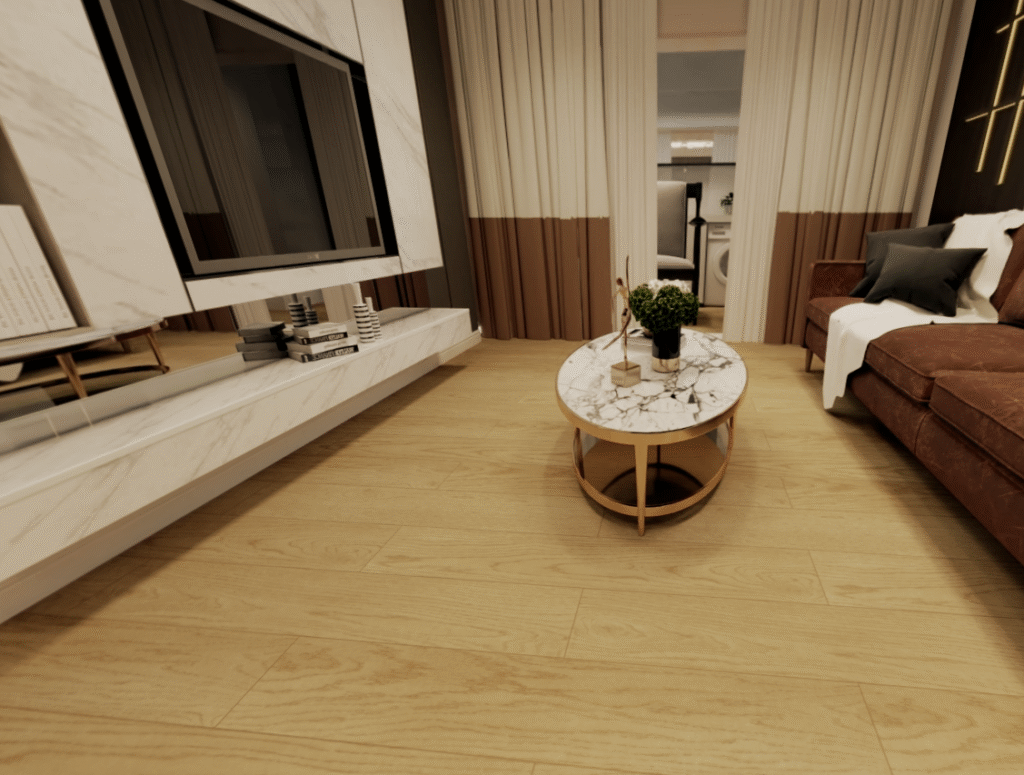What exactly is laminate flooring?
Laminate flooring has emerged as a popular and practical choice for modern interior design, blending affordability, durability, and aesthetic appeal seamlessly. This engineered flooring solution consists of multiple layers, each contributing to its unique properties.
At the core of laminate flooring lies a high – density fiberboard (HDF) or medium – density fiberboard (MDF) core. This core provides the structural strength, ensuring the floor can withstand daily foot traffic, furniture movement, and the occasional accidental drop. On top of the core is a photographic layer that mimics the appearance of natural materials such as wood, stone, or tile. Thanks to advanced printing technology, the designs can be incredibly realistic, offering a wide range of styles from rustic hardwood looks to sleek marble finishes. Protecting this beautiful image is a clear wear layer, usually made of aluminum oxide or melamine resin. This layer gives laminate flooring its remarkable durability, making it resistant to scratches, stains, fading, and even moisture to a certain extent.
One of the most significant advantages of laminate flooring is its durability. Rated according to the AC (Abrasion Class) system, laminate floors with higher AC ratings, like AC4, are suitable for heavy – traffic commercial areas and busy households. They can endure years of use without showing significant signs of wear, making them a long – term investment. In terms of aesthetics, the variety of designs allows homeowners to match their flooring with any interior theme, whether it’s a cozy farmhouse style or a contemporary minimalist look.
Installation is another area where laminate flooring shines. Most laminate products feature a click – lock or floating floor system, eliminating the need for messy adhesives or nails. This not only simplifies the installation process but also makes it possible for DIY enthusiasts to tackle the project on their own, saving both time and installation costs.
Moreover, laminate flooring is an eco – friendly option. Many manufacturers use recycled materials in the production process, and the efficient use of resources reduces waste. Compared to natural materials like solid wood, laminate flooring requires less energy to produce and transport, further minimizing its environmental footprint.
However, it’s important to note that while laminate flooring offers good moisture resistance, it’s not completely waterproof. Therefore, it’s recommended for areas with low to moderate humidity, such as living rooms, bedrooms, and dining rooms. For bathrooms and kitchens, special water – resistant laminate products are available, but proper care and maintenance are still essential.
To keep laminate flooring looking its best, regular cleaning with a soft – bristle broom or a microfiber mop is sufficient. Avoid using abrasive cleaners or excessive water, as they can damage the surface. Spills should be wiped up promptly to prevent moisture from seeping into the seams.
In conclusion, laminate flooring combines functionality, style, and cost – effectiveness, making it an excellent choice for anyone looking to enhance the look of their space without breaking the bank. With its easy installation, durability, and wide range of design options, laminate flooring continues to be a top pick in the world of interior design.
